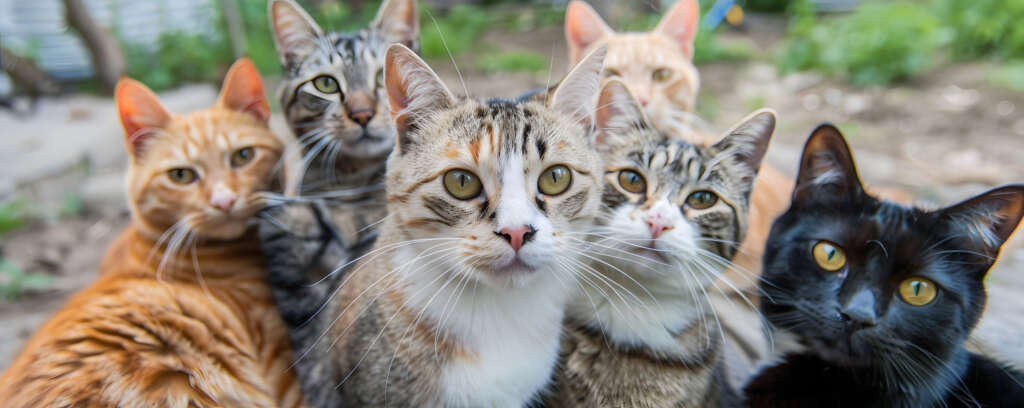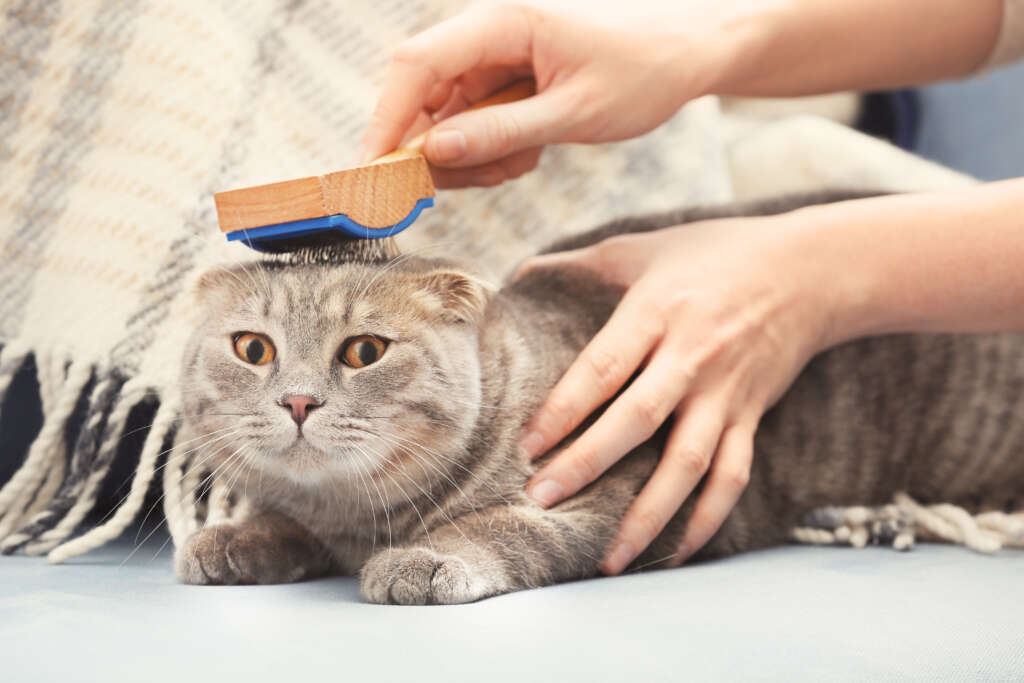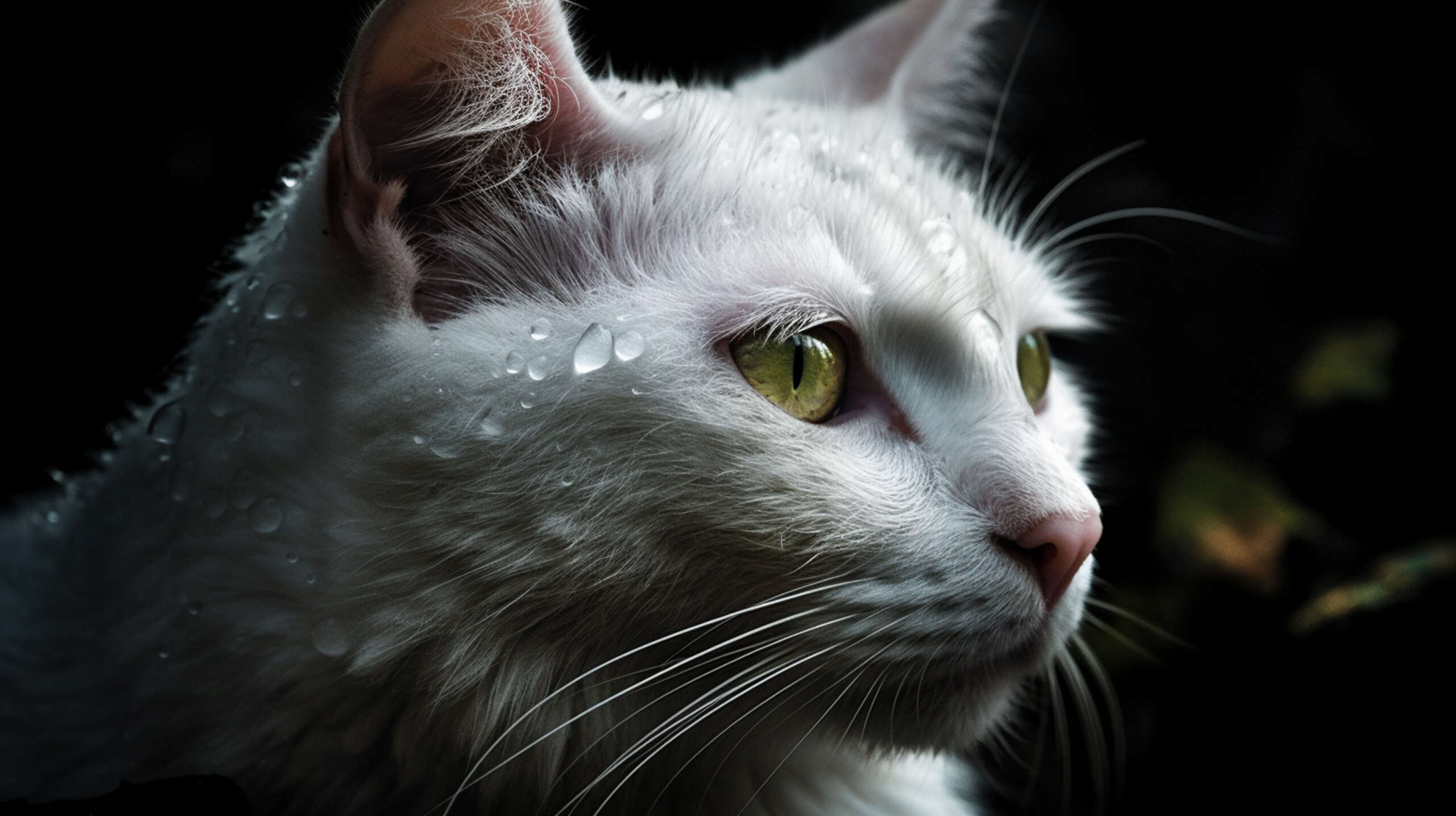Share This Article
Can cat lovers finally relax? Hypoallergenic pets are becoming more common in the homes of people with pet allergies. These cats bring comfort without the need for tissues and antihistamines.
But finding the right cat isn’t just about the label ‘hypoallergenic.’ No cat breed is completely safe from causing allergies. Yet, 12 breeds are known to produce fewer allergens, making them a good choice for those with allergies. The Siberian and Russian Blue cats are examples of these breeds.
Explore the world of allergy-friendly cats and see how breeds like the Siamese, Bengals, and Sphynx might be right for you. With new foods like Purina Pro Plan LiveClear and simple household tips, living with cats can be easier.
But it’s not just about the cat’s breed; it’s about how we live with them. Hypoallergenic cats need our care and understanding. By meeting their grooming needs and keeping a clean home, you can enjoy a happy life with your cat.
Understanding Cat Allergies and Hypoallergenic Cats
Many people love having cats around, but some can’t because of allergies. These allergies come from proteins in cat saliva, dander, and urine. Knowing what causes allergies to cats helps find breeds that are better for those with allergies.

For those looking for hypoallergenic cat options, no cat is completely free from allergens. But, some breeds have less of the protein that causes allergies. For example, Siberian and Balinese cats have lower levels of this protein, making them good for people with mild allergies.
Other things like the cat’s age, sex, and color also affect how much allergen they produce. Young kittens and certain male cats make fewer allergens. This shows why picking the right cat is important for people with allergies.
For those with mild to moderate allergies, looking into hypoallergenic cat options can help. Cats like the Devon Rex and Cornish Rex are good choices because they don’t shed much. But, avoid cats like the Ragdoll or Himalayan as they can make allergies worse.
In short, no cat is completely free from allergens. But, picking breeds that are allergy-friendly and knowing about what causes allergies in cats can help. Choosing the right breed, along with regular grooming and special cat food, can make living with cats better for everyone.
The Siberian Cat: A Lush Fur That’s Allergy-Friendly
Siberian cats are special among low-allergen cat breeds. They are known for their stunning looks and being good for people with allergies. These cats come from Russia’s cold, forested areas. They have a unique trait that sets them apart: they make less Fel d1 protein. This protein is the main cause of cat allergies, but Siberian cats are a relief for those who are allergic.
Siberian cats are great for people with allergies because of their thick, triple-layer coats. Even though it’s very fluffy, it doesn’t increase allergens in the home much. This is surprising, given their fur. Studies show that even when they shed in spring, they’re still usually safe for people with allergies. So, regular grooming in spring helps keep the fur under control.
These cats are not just pretty and good for allergies; they’re also known for their robust health and long lifespan. These qualities make them wonderful pets. They fit well in any living space, showing that beauty and usefulness can go together in hypoallergenic pets.
Identifying Hypoallergenic Cat Breeds
Looking for the best cats for allergies means knowing what makes some breeds better for allergy sufferers. Hypoallergenic cat breeds like the Siamese, Bengal, and Russian Blue are great for those allergic to cats. They have traits that help reduce allergic reactions, such as less fur or no fur at all.

Cat allergies are more common than dog allergies, often due to a protein called Fel D1. This protein is in cat saliva and skin. Breeds like the Sphynx, Devon Rex, Cornish Rex, and Balinese have lower levels of this protein. Light-colored cats and females also tend to produce fewer allergens than dark-colored or male cats.
Choosing the best cats for allergies also means thinking about your lifestyle and the cat’s grooming needs. For example, the Siberian cat needs more grooming because of its thick fur. Regular grooming and a clean home can help reduce allergens. Breeds like the Bengal and Russian Blue, with their fine coats, shed less and are better for allergy sufferers.
Finding the right hypoallergenic cat breed means looking at their natural allergen production and how they fit with your allergy management. This helps you pick the best cat for your home.
The Unique Grooming Needs of Hypoallergenic Cats
Grooming hypoallergenic cats is key for their looks and health. These non-shedding cats make fewer allergens, but grooming helps control allergens. Regular grooming stops dander and allergens, important for those with allergies.
For example, the Sphynx cat needs baths to manage its skin oil. The Devon Rex and Cornish Rex also need regular grooming for their special fur. These routines keep cats clean and make homes safe for allergy sufferers.
Grooming hypoallergenic pets means more than just brushing their fur. It includes nail clipping, ear cleaning, and teeth brushing to lower allergens. Each cat type has its own grooming needs, so owners should pay attention to these.
Regular grooming is vital for the pet’s health and a safe home for everyone.
Right grooming tools and methods are key to trap allergens close to the cat. This helps reduce allergens at home, making it safer for everyone.

Knowing how to groom non-shedding cats helps those with allergies. A regular grooming routine keeps these cats healthy and happy. It also helps them live well in homes with allergies.
Finding the Right Hypoallergenic Cat for Your Home
Looking for hypoallergenic cat options means checking out different breeds to fit your needs. Cats that are good for people with allergies make fewer allergens, but how you react can change a lot. It’s important to pick a breed that fits your health needs and home.
Allergy-friendly cats like the Siberian and Russian Blue have less Fel d1 protein. This protein is key in causing allergies. The Siberian cat has a long coat but is hypoallergenic because of its special traits. Russian Blues also have a lot of fur but make fewer allergens, making them great for sensitive people.
The Cornish Rex and Devon Rex have a special advantage. They only have a soft undercoat, which means they shed less and make fewer allergens. For those wanting a cat with almost no fur, the Sphynx is a good choice. It doesn’t have fur but needs regular baths to keep oils under control, which is important for keeping allergens down.
Balinese and Javanese cats make less Fel d1 protein and shed less. They are good hypoallergenic cat options for those who want long-haired cats. Talking to a vet can help find the right breed and ways to manage allergies at home.
Choosing the right cat is more than just looking at breeds. Spending time with a cat before you adopt is key to seeing how you react to it. Picking breeds known for being cats for allergy sufferers and trying them out can help make a good choice for your health and lifestyle.
Finding a cat that fits both your aesthetic preferences and allergy requirements can enhance your quality of life by providing companionship without the discomfort of allergic reactions.
In conclusion, when picking a hypoallergenic cat, think about breeds like the Siberian, Russian Blue, Bengal, and Sphynx. They make fewer allergens and are easy to keep clean. Looking into each breed carefully will help you find a cat that’s good for your allergies and your heart.
Non-Shedding Cats and Low Allergen Breeds
For those with allergies, finding a pet that doesn’t make symptoms worse is key. Non-shedding cats and low-allergen cat breeds can be a solution. They offer love without the allergens. While no cat sheds nothing, many breeds shed less and produce less dander.
Breeds like the Russian Blue, Bengal, and Balinese are great for those with allergies. The Bengal stands out with its stunning coat and low shedding. Its short, pelt-like fur means less grooming and fewer allergens, making it a top pick among non-shedding cats.
Low-allergen cat breeds often have shorter or less dense coats. This makes them easier to care for and keeps the home cleaner.
The Exotic Shorthair and the Burmese cat also shed less. Their fine, short coats release fewer allergens. Regular grooming can cut down on allergens even more.
While no cat is completely allergen-free, choosing these breeds can greatly reduce allergy issues at home. Keeping these cats clean and well-groomed makes them better companions for those with allergies.
It’s important to consider the needs of pets and allergy sufferers. Low-allergen cat breeds can help, but allergies can differ from person to person. Before getting a pet, spend time with the breed to make sure it fits with your allergy needs.
Reducing Allergies with a Proper Cat Diet
Many people, about 30 to 40 percent, suffer from allergies worldwide. For those allergic to cats, knowing how a cat diet affects allergens is key. Hypoallergenic cats do well on special diets that lower allergenic proteins. Foods like Purina Pro Plan LIVECLEAR have been proven to reduce major allergens in cat hair and dander.
Choosing the right cat food is just part of managing cat allergies. It helps along with regular cleaning and picking low-allergen breeds. A study found that cat baths can cut allergens by up to 84 percent. Adding a special diet can help even more by tackling the root of the problem.
Talking to a vet is crucial for finding the right diet for your hypoallergenic cat. They can suggest foods backed by science and give advice tailored to your cat. Allergies are a big deal, affecting about 15 to 30 percent of people, including those allergic to pets. A vet can help make your home safe for allergy sufferers by finding the right diet.


